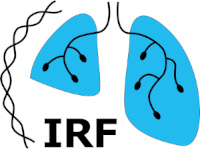- Index
- >Research topics
- >Axis 2: Pathogenesis and adaptation
- >Theme 2: Adaptation to the bronchial microenvironment
Adaptation to the bronchial microenvironment
In this project, we are studying the repercussions of the microorganism's exposure to the specific physico-chemical conditions it encounters in the bronchial mucus of the airways of cystic fibrosis patients, using transcriptomic, proteomic and metabolomic approaches. As a result of the thickening of the bronchial mucus, the microorganism is confronted, in the depth of the mucus layer, i.e. in contact with the epithelial cells, with a lower oxygen partial pressure compared with the ambient air, and conversely with a higher carbon dioxide partial pressure. Similarly, in cystic fibrosis, the bronchial mucus in which microorganisms develop is characterised by high lactate levels, a lower pH and reduced osmotic pressure.
At present, all studies into pathogenic mechanisms are carried out under standard culture conditions. However, these hypoxic and hypercapnic conditions are known to modify the expression of numerous genes in other fungal models, some of which are involved in pathogenicity. Similarly, the presence of lactate as a carbon source in the yeast C. albicans results in a change in the biochemical composition of the cell wall, which, as the first structure in contact with host tissues, plays a major role in various stages of the pathogenic process. Finally, the influence of pH and osmotic pressure on the physiology and pathogenic mechanisms of certain fungal species is also well established.
Global approaches are therefore currently being developed for our fungal model,
S. apiospermum, with the study of transcriptomic, proteomic and metabolomic changes in response to exposure of the fungus to these physico-chemical parameters, approaches that are made possible by knowledge of the genome of our fungus.


